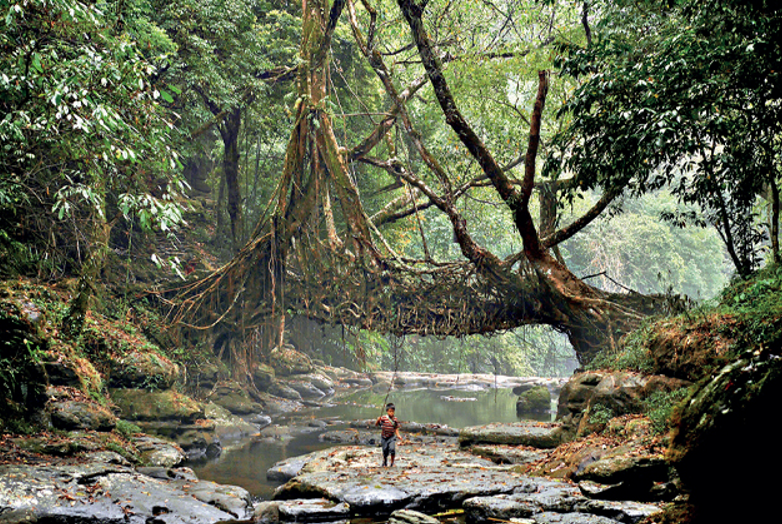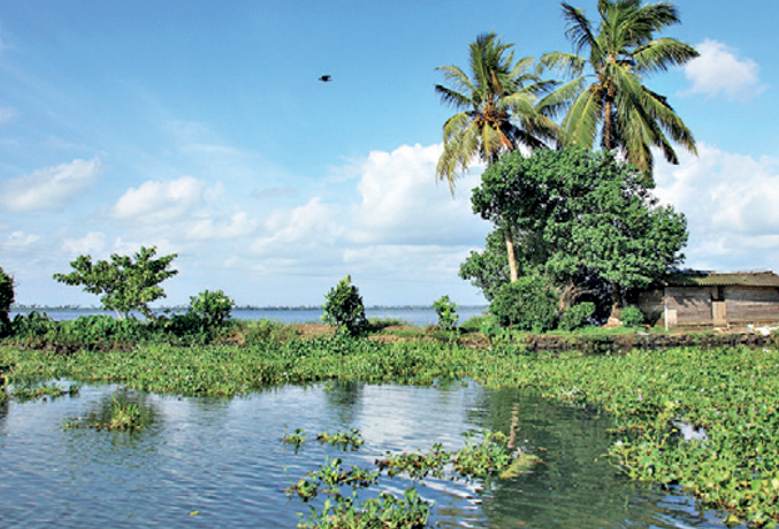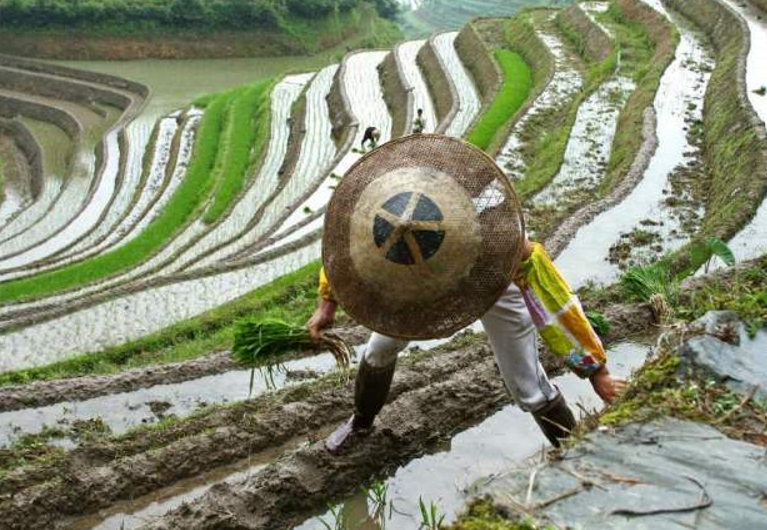Problem with high-tech solutions:
High-tech solutions to climate change are based on an idea of abundance of resources, money and unrestricted scalability. But it is these principles of infinite resources that make this tech inherently unsustainable.
High tech vs lo-tech:
In contrast, lo-tech is born of finite resources and an understanding that ecosystems have limitations. Indigenous innovations evolved over thousands of years while dealing with climatic extremes like tidal surges and floods.
This technology has inherent principles which make it truly sustainable.
Idea behind traditional lo-tech innovations:
These innovations are based on diverse ecological understanding of indigenous communities.
-
Man and nature are one: Nature is not seen as being separate from human beings. Human beings are all a part of the nature. Hence, these lo-tech innovations encourage working alongside with natural systems like water, trees and sunlight.
-
Value Stewardship: These technologies also value stewardship i.e. taking care of the resources. These are not about always extracting from nature or showing a superiority complex regarding biodiversity which often reflects in Western ideology. Instead, lo-tech emphasises symbiosis, working with different life forms and preserving diversity because that makes resilience possible.
Examples of lo-tech:
-
Meghalaya’s living root bridge system: Meghalaya has some of the highest rainfall in the world. When the monsoon comes, the rivers rushing by take out all the bridges, except for the living root bridges grown by the Khasi and Jaintia people. The Khasi community weaves together tree roots to make living bridges that can withstand monsoon storms and floods. These are built out of rubber fig trees planted near rivers by the community. They train the trees to grow across rivers and then, using bamboo scaffolding, they weave their secondary root systems together – after some years, you get a living root bridge. There are about 30 such bridges today and they are the most structurally efficient system possible.

-
Kerala’s Kuttanad system — it’s like the Dutch polder-dike arrangement, with a polder or lake lower than sea level and a dike or barrier which keeps the water out. This helped the Dutch make low-lying lands agricultural. Kerala’s Kuttanad is similar. It allows saltwater in, where shrimp is farmed. When the monsoon comes, this changes to a freshwater system which grows crops. For people trying to mitigate sea level rises on land, this is an important innovation. Kerala’s technology is better than the Dutch because it deals with an intense weather system like the monsoon.

-
Philippines’ rice terrace aquaculture: There is also the Philippines’ rice terrace aquaculture, made by the Ifugao people in Banaue. These fields are sloped at 80 degrees, so they’re near-vertical. These are thousands of years old and incredibly biodiverse, supporting birds, aquatic and terrestrial life, including humans, through the growing of rice. They’re acknowledged by UNESCO as some of the most important habitats on Earth.

Way forward
These examples show that conversations about climate resilient technology don’t need to be dominated by the West with a narrative that is centered completely around high-tech solutions.
We need such site-specific technologies to deal with sea level rise, food scarcity, water shortages, etc. Locally developed tech will mitigate these challenges.
We must think about adaptability, flexibility and how to integrate with natural systems and only indigenous technology lets us do this.
Conclusion
We cannot solve climate change with the same approach that created the problem. We need to move from polluting technology to nature-based science and the bridge enabling this important step is indigenous technological innovation.